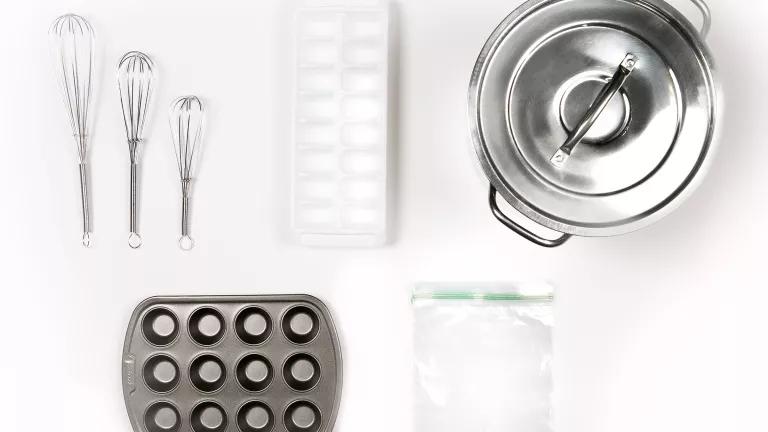10 Easy Tips for Meal Planning
Planning meals in advance can seem intimidating. But it doesn’t have to be. (No, really.) Arm yourself with these 10 easy tips, and you’ll be scheduling meals and saving food like a pro in no time at all.


1. Don't start from scratch.
Successful meal planning doesn’t have to mean hours spent with a cookbook. Start with your go-to meals. Repeat them every week or two. Then, if you’re up for it, toss in something new every once in a while.

2. Check the refrigerator.
Next week’s meals get their start in the refrigerator. See what needs to be used up, and then think of a meal to make with those items. Check your pantry for the rest of the ingredients and add missing pieces to the shopping list. Voilà. Meal one? Check.

3. Use portion planners.
Portion calculators can help you feed a big group, but they can offer insight too—like why there’s always so much extra rice.

4. Have kitchen essentials handy.
Stock up on two or three grains, cooking fundamentals, key spices, and “hero” sauces like barbecue and peanut sauce. These items can come to the rescue and bring new life to old meals.

5. Use building blocks.
Pick two types of protein, one or two grains, and a vegetable medley to make at the beginning of the week and incorporate into different meals. For instance, a sauté of broccoli and peppers can be used as a side one night, spooned onto enchiladas another night, and worked into a soup or meatloaf later in the week.

6. Think double duty.
Planning a Tuesday taco night? Think about other ways to use those tortillas. Asian salad wraps, perhaps? Ingredients sometimes come in larger portions than we need. If you plan a second meal around them, it’s easier to avoid the end-of-the-week overload.

7. Schedule a lazy night.
We often go to the store hoping to prepare fresh meals all week, but the truth is, we don’t have the time or energy to cook every night. Plan a few lazy nights that don’t require cooking and take the opportunity to order takeout or dine with friends.

8. Go fresh first.
To preserve freshness and nutrition, use perishables like seafood and meat earlier in the week and save staples (pasta, dairy, omelets) for later in the week. Some greens, like kale and chard, will stay fresh longer than others.

9. Lean on frozen ingredients.
Frozen foods have nearly all of the nutrients and sometimes more than their fresh counterparts. And they don’t go bad. Plus, frozen vegetables fill in the gaps. You can buy fresh vegetables in smaller amounts, without ending up veggie-less at the end of the week.

10. Cook and freeze.
Soups, stews, casseroles, and lasagna can all be made in large batches and then frozen and defrosted when you need a quick dinner. To keep it easy, always freeze in the portion sizes you’ll want to defrost.
This NRDC.org story is available for online republication by news media outlets or nonprofits under these conditions: The writer(s) must be credited with a byline; you must note prominently that the story was originally published by NRDC.org and link to the original; the story cannot be edited (beyond simple things such as grammar); you can’t resell the story in any form or grant republishing rights to other outlets; you can’t republish our material wholesale or automatically—you need to select stories individually; you can’t republish the photos or graphics on our site without specific permission; you should drop us a note to let us know when you’ve used one of our stories.

In Planning for Climate Change, Native Americans Draw on the Past
The Smart Seafood and Sustainable Fish Buying Guide
If You Care About Climate Change, Then You Care About the Farm Bill